Acoustic Instrument
Primers
What Kind of Guitar
Should I Start On?
What Kind of Banjo
Do I Want?
Evaluating and
Buying Used Guitars
Setting Up
Fretted Instruments Whatever Happened
to the Banjo?
Beginning Five-
String Banjo
6-String Banjos
Banjo Pickups
What is a
Bluegrass Banjo?
What is a Tenor Guitar?
Dean "Backwoods
Six" Shootout
Axes in my Life
Music Theory
Primers
Introduction to Scales
Introduction to Chords
Circle of Fifths
Other Articles
About Music
How to Give
Guitar Lessons
Musician or Wannabe? Did God ReallyGive
Rock & Roll to You?
Are You a
"Brand Bigot"?
Who Owns Folk Songs?
Historical Links
About the
National Road
The Story Behind
the Story - Real
People, Places,
and Events
About the Play
Play Home
Overview
About the Music
About the History
About the Author
Contact Us
Home


|

|
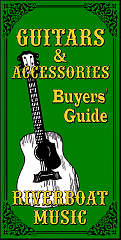
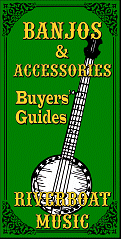
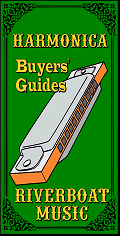
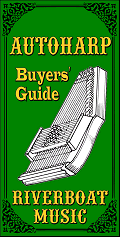
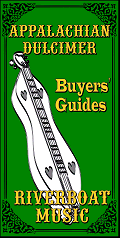
 The Circle of Fifths
The Circle of Fifths
Part 1
Creek Don't RiseTM and School Of The RockTM |
To be considered a "guitar player," "bass player," or even "Gospel, Rock, Country, or Urban piano player" today means that, once you know the key of a song, you can pretty much play along without sheet music, tabulature, or chord charts. Although this is often called "playing by ear," it really depends on learning - and internalizing - the relationships among chords in any key.
If you have access to a keyboard, try this experiment: Play a C major triad (C,E,G) in the middle of the keyboard. Now move your fingers all up one white key and play the next chord (Dm - D, F, A). Keep going until you get all the way back to C again. Intro to Chord Relationships
 If you don't have access to a keyboard, click on the mp3 logo button to the right to hear what this sounds like.
If you don't have access to a keyboard, click on the mp3 logo button to the right to hear what this sounds like.

In classical music terminology, this progression is shown by Roman numerals, with upper case numerals showing the major chords. In popular music (and a system used by Nashville studio musicians) the progression may be shown by numbers.
Ignore the diminished chord for now - except for Jazz, it's not as important in most popular music as the major and minor chords.
You can see that if you are playing in the key of C and you don't introduce any sharps or flats, only three chords in that key are major chords - C, F, and G, the 1st, 4th and 5th chords.
Because of the rules of modern harmony, nearly any song you play in the key of C will use those chords more than any other chords. They even have special names that are often used by musicians in many circles:
- Tonic, or Root chord - Also called the I or 1: The triad that starts with the note that is the same as the key of the song. If the song is in the key of C, then the C chord is the Tonic.
- Dominant - Also called the V or 5: The chord that - other than the Tonic - is mostly likely to be used in a song. If the song is in the key of C, then the G chord is the Dominant.
- Subdominant - Also called the IV or 4: The chord that - other than the Tonic and Dominant - is mostly likely to be used in a song. If the song is in the key of C, then the F chord is the Subdominant.
If you do the same exercise on the keyboard on the key of G, remember to keep the F sharp.  If you don't have access to a keyboard, click on the mp3 logo button to the right to hear what this sounds like.
If you don't have access to a keyboard, click on the mp3 logo button to the right to hear what this sounds like.

The results are shown in the following table:
You can see that in the key of G, the only major chords are G, C, and D, the 1st, 4th, and 5th in this key. Again, if you're playing a song in the key of G, the other two chords most likely to be used (besides G) are C and D (the 4th and 5th). You can also see by the numbering systems, that although the chord names change, the relationships among the chords in any key will stay the same.
What's more, this works for every key!
A Note About Dominant Sevenths - In many songs, the dominant (5th) has an additional note, called a "flatted seventh," that adds tension and makes the transition back to the tonic (1) seem even more "inevitable." So if you're in the key of G, the dominant (D) may add a C note to create a "D7" chord. If you're in the key of C, the dominant (G) may add an F note to create a "G7" chord. Again, the Dominant Seventh principle works in every key.
In some cases, the "Dominant Seventh" chord may actually be easier to play than a straight chord, which is why the two-fingered version of A7 is quite popular among guitar players for songs in the key of D. Being able to replace Dominant chords with Dominant Seventh chords is not critical, but knowing how they fit into the overall pattern is very helpful.
A Note about Other Chords - If a song adds chords besides the 1, 4, and 5, the additional cords are also likely to be from the table above. The minor chords (2, 3, and 6) also have traditional uses, several of which are described in our Part 2.
Amaze Your Friends - A musician who understands the relationships among chords just needs to know what key the song is in to accurately predict which chords will be most often used. As his or her skills progress, the musician gets a "feel" for if and when all of the other chords will be used, too.
Some musicians will pretend that it's a "gift," or that if you "feel it in your gut" it will all "come to you" without any real work. But they're lying to make themselves seem more naturally talented than they really are, if not to protect what they consider a sort of "trade secret." The truth is that it's all about study and practice.
About Songs that "Break the Rules": Some popular and Celtic songs use chord changes that don't exactly "fit" this format, and there are many cases in which a chord that would usually be minor is temporarily changed to a major chord. But the vast majority of songs written since, say 1600, use these chord relationships as the basic building blocks of their harmony. And you will never gain "cred" as a guitar player, bass player, or pop piano player until you have them internalized so much that you don't even have to think about them as you're playing.
Here's an irony - a number of bands have become one-hit wonders because, totally ignorant of the concepts presented here, they have stumbled upon an unusual chord sequence that sounds compelling or "fresh." Then their next song sounds just the same, and the next song sounds just the same, because the "fresh" sound was an accident, and they don't know where to go from there.
The Circle of Fifths Chart
You CAN internalize this knowledge within several years by playing in a wide range of circumstances. Or you can give yourself a big headstart in a number of days by memorizing the "Circle of Fifths" and making a point of seeing how it applies to every new song you learn.
 If you're a guitar player and you click on the chart illustration to the right, you'll get a big version you can print out and keep handy for the rest of this discussion. If you play banjo, mandolin, or tenor, check the table below for the chart you need.
If you're a guitar player and you click on the chart illustration to the right, you'll get a big version you can print out and keep handy for the rest of this discussion. If you play banjo, mandolin, or tenor, check the table below for the chart you need.
You'll see that each chord is adjacent, not to the next note in the scale, but to the 4th and 5th. So if you start with the C chord, for example, you'll see that F and G (the 4th and 5th chord in the key of C) are next to it on the chart. If you start with G, you'll see that C and D (the 4th and 5th chord in the key of G) are next to it on the chart. Wherever key you start with the two other chords most likely to be used in that song are next to it.
If you go clockwise around the chart, you're going up a fourth at every jump. Consequently some folks will call this the "Circle of Fourths." If you go counter-clockwise, you're going up a fifth at every jump. There are only twelve "keys" in popular music, so once you get halfway around, you've gone up (or down) a half a step, then once you get the rest of the way around, you're back to where you started.
The following table links you to you the Circle of Fifths charts for guitar, mandolin, and various banjo and tenor tunings.
A Note About Funky Keys - It's also worth noting that when you get into the "twilight zone" of multiple sharps and flats, the chords have multiple names, depending on what key the song is in. So a song in the key of Ab will use a Db chord. But that same "Db" chord will be considered a "C#" chord if the song is in the key of F#. If you're a guitar player, don't worry about those funky keys for now - depending on the kind of music you play, you may only actually use them a few times in your life. (On the other hand if you play piano "on the black keys" like Gospel songwriter Andrae Crouch, you may spend most of your life going between Gb, Db, and Cb. Even there, though, the relationships among those chords works the same as the relationships among G, D, and C.)
Magic Circle Chart
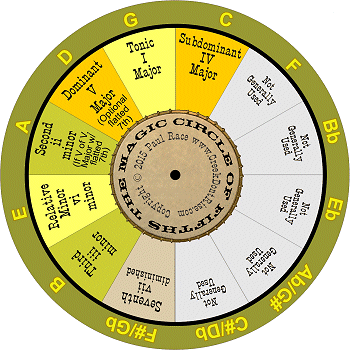 To help you internalize these principles, we've added a handy learning aid that you can print, cut out, and assemble. The inner circle is a wheel that will turn on its axis. When you learn what key a song is in, simply turn the "tonic" spoke toward that key name on the outer circle, and you'll see which other chords are most likely to be used in the song.
To help you internalize these principles, we've added a handy learning aid that you can print, cut out, and assemble. The inner circle is a wheel that will turn on its axis. When you learn what key a song is in, simply turn the "tonic" spoke toward that key name on the outer circle, and you'll see which other chords are most likely to be used in the song.
For best results, right-click on the picture to the right and select "Save link as" or "Save target as" (depending on your browser). You'll get a pdf file that includes instructions.
Using the Circle of Fifths in a Three-Chord Song
So many songs use just three chords, that people generally call a song that is easy to learn a "Three-Chord Song" even if it has more than three chords. Here are a couple songs that can be harmonized with three chords to give you an idea how they work.Crawdad Song
D
You get a line and I'll get a pole, Honey,
D A7
You get line and I'll get a pole, Baby.
D
You get a line and I'll get a pole,
G
We'll all go down to that crawdad hole,
D A7 D
Honey, pretty baby mine.
Amazing Grace
If you play "Amazing Grace" without the chords in parentheses, it's a "three-chorder." Ironically, some old hymnbooks put the entire song in a G chord, which is also possible, but boring.
G (G7) C G
Amazing Grace, how sweet the sound
G (Em) (A7) D7
That saved a wretch like me
G (G7) C G
I once was lost, but now I'm found
(or Em) D7 G
Was blind, but now I see.
Note: Now try it with the chords in parentheses, and you'll see how substituting certain kinds of chords can provide interest. Our "The Circle of Fifths Part 2" article explains why those substitutions work and how you use similar substitutions in your own songs or arrangements.
Pop Quiz
For a little fun, write the answers to these questions on a piece of scrap paper.- In the "Crawdad Song," what chord is the "tonic" or "root" chord (I or 1 in the numbering scheme)?
- What chord is the 4th?
- What chord is the dominant?
- If a banjo player joins your group and insists that you have to sing the "Crawdad Song" in the key of G so he can get in his special "licks," what chords will you use?
- In the song "Amazing Grace" what chord is the "tonic"?
- What chord is the subdominant?
- What chord is the 5th?
- If a soloist insists that you have to transpose this song to the key of Ab, what chords will you use? (Find Ab on the "Circle of Fifths" chart and look for the adjacent chords.)
- What chord would be the dominant?
Answers
- D
- G
- A7
- G, C, D
- G
- C
- D7
- Ab, Db, Eb (or Eb7)
- Eb (or Eb7)
All material, illustrations, and content of this web site is copyrighted © 2001, 2002, 2003, 2004, 2005, 2006,
2007, 2008, 2009, 2010, 2011, 2012, 2013, 2014, 2015, 2016 by Paul D. Race. All rights reserved.
Creek Dont' Rise(tm) is a participant in the Amazon Services LLC Associates Program, an affiliate advertising
program designed to provide a means for sites to earn advertising fees by advertising and linking to Amazon.com.
Note: Creek Don't Rise (tm) is Paul Race's name for his resources supporting the history and
music of the North American Heartland as well as additional kinds of acoustic and traditional music.
For questions, comments, suggestions, trouble reports, etc. about this play or about this web page, please contact us.
| Visit related pages and affiliated sites: | ||||||
| - Music - | ||||||

|
 |
 |

|

|

|
|

|

|

|

|

|

|
|
| - Trains and Hobbies - | ||||||
 |

|

|  |
 |

|
|
| - Christmas Memories and Collectibles - | ||||||
 |

|
 |

|
 |

|
|
| - Family Activities and Crafts - | ||||||
 |

|

|

|

|

|
|






















